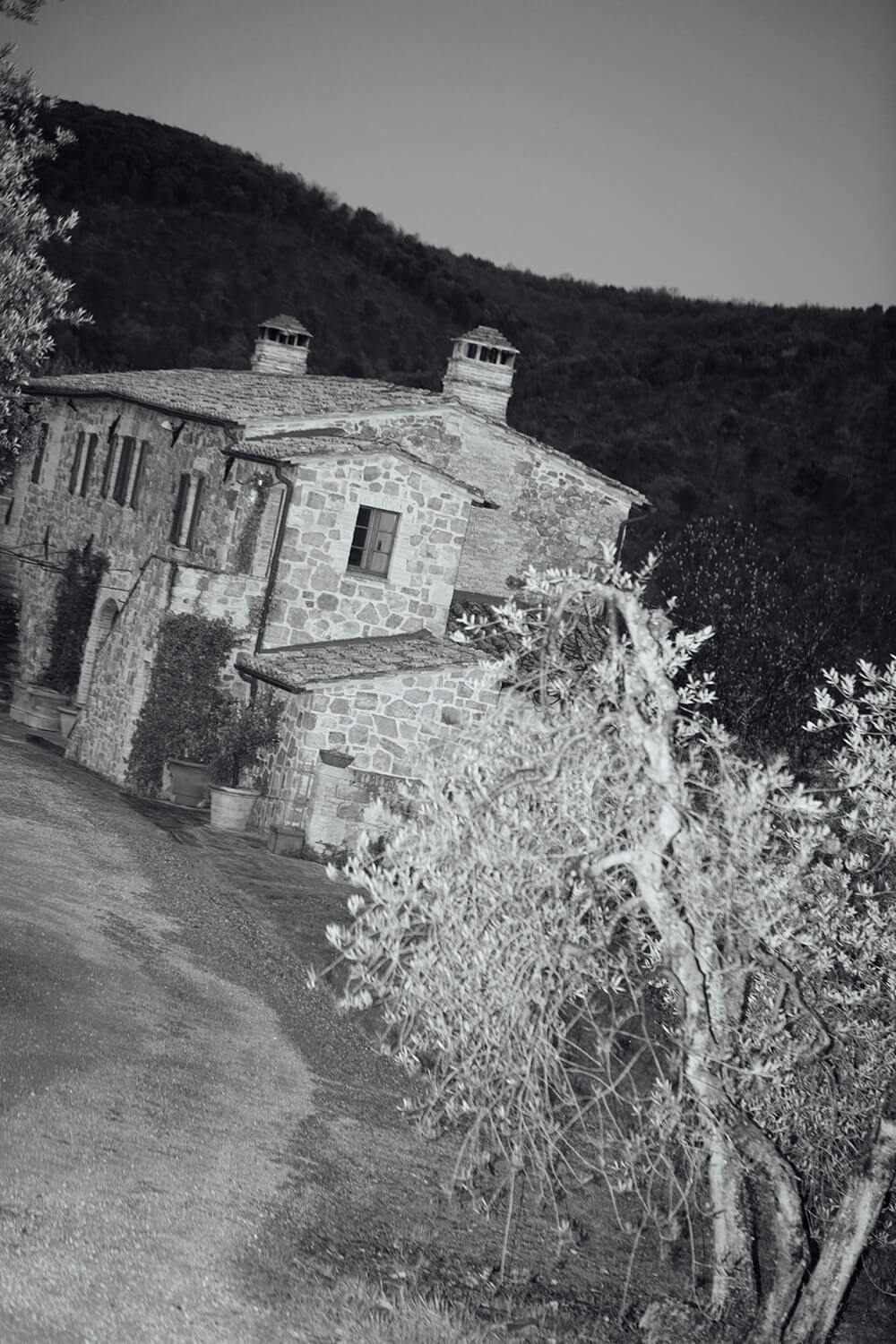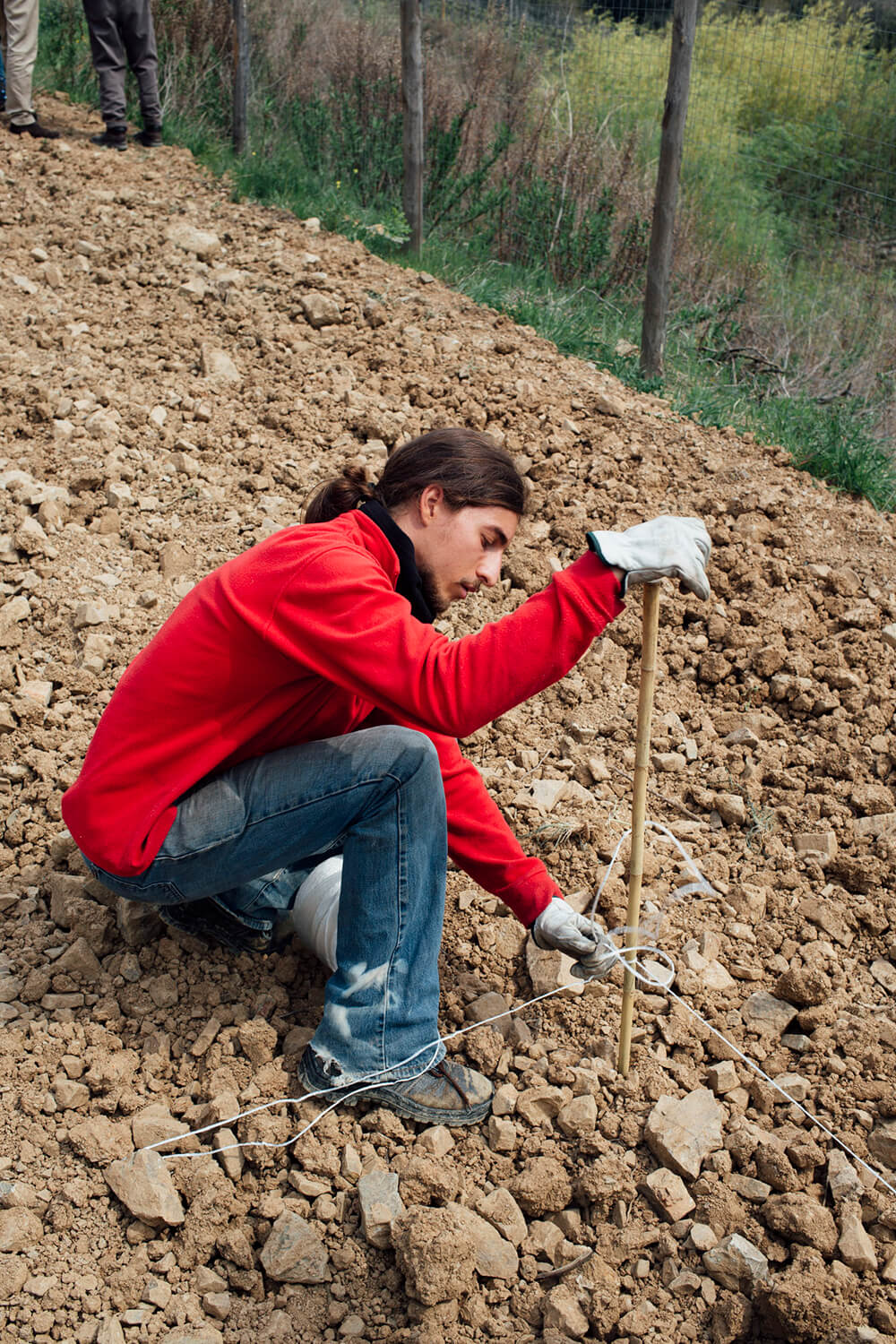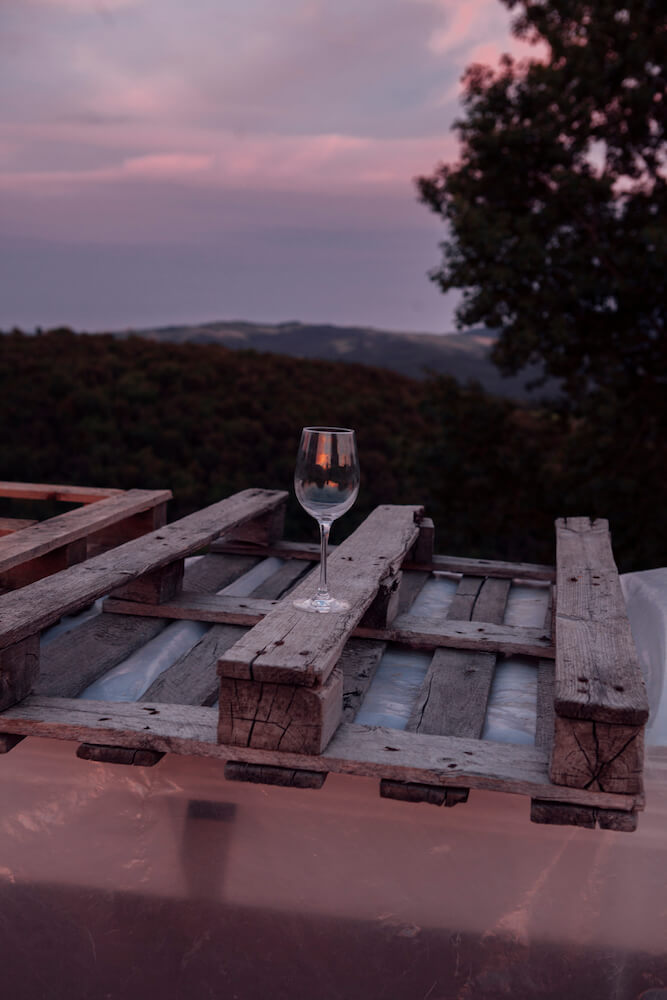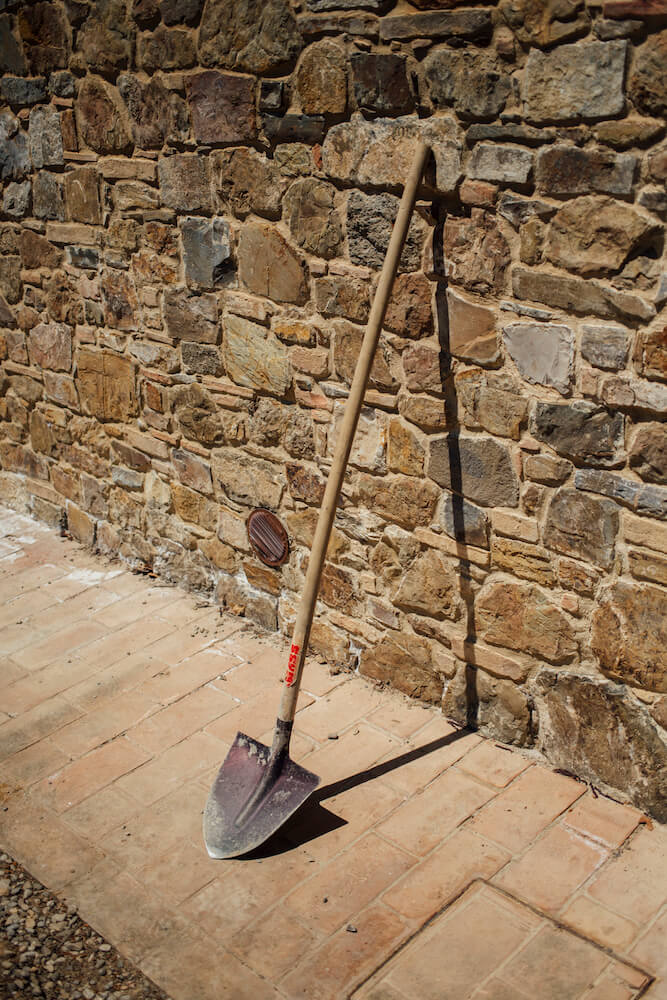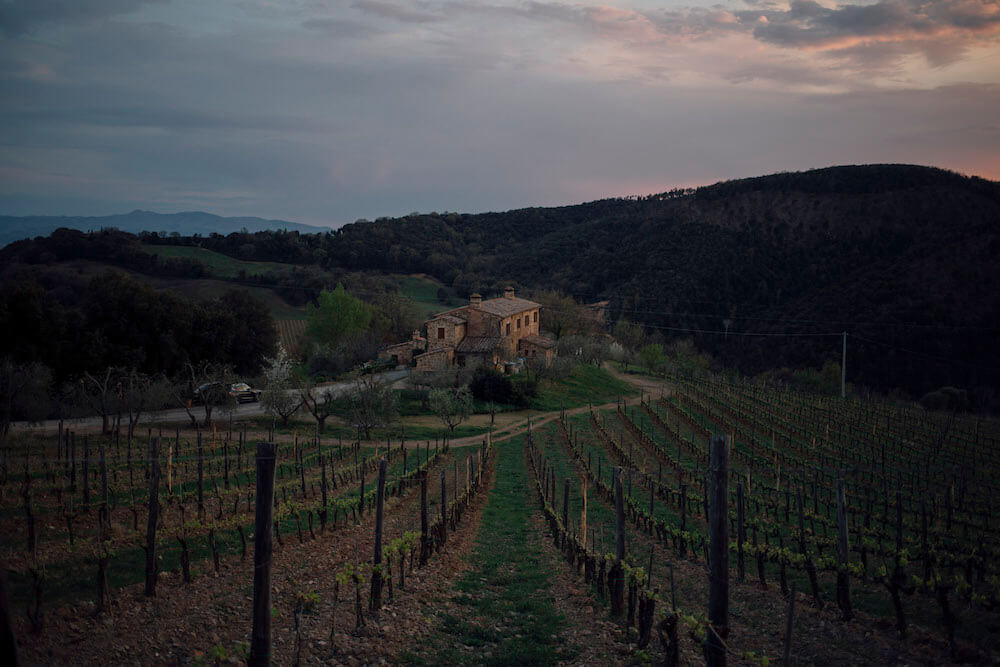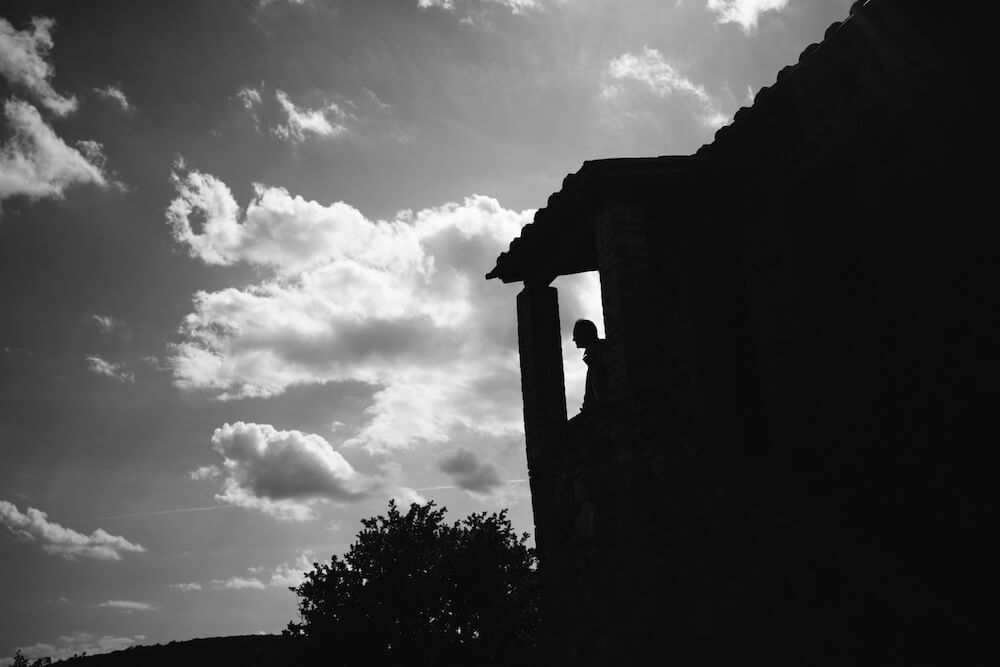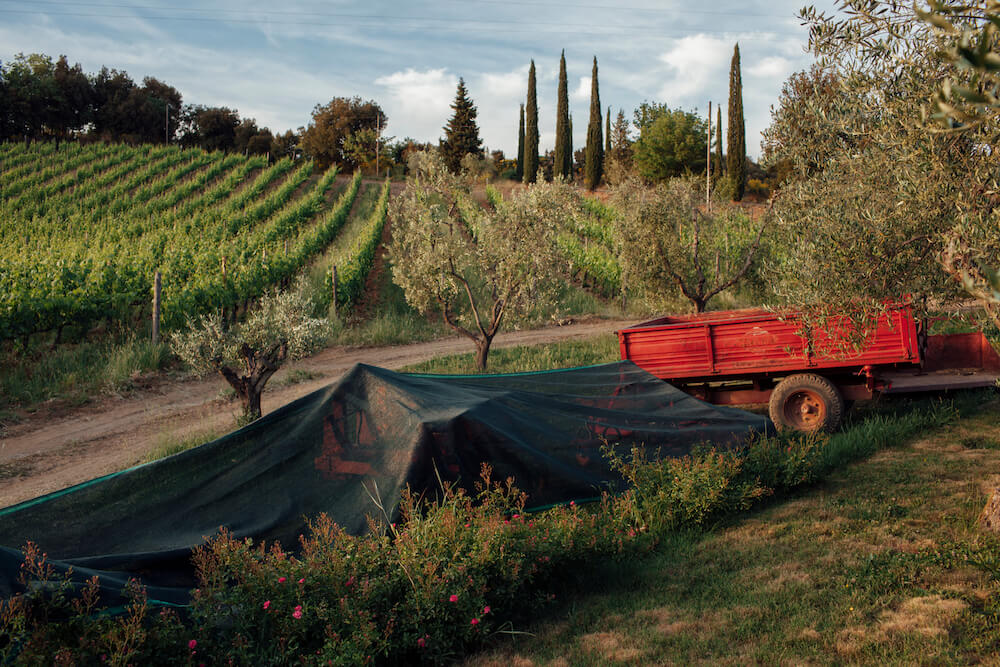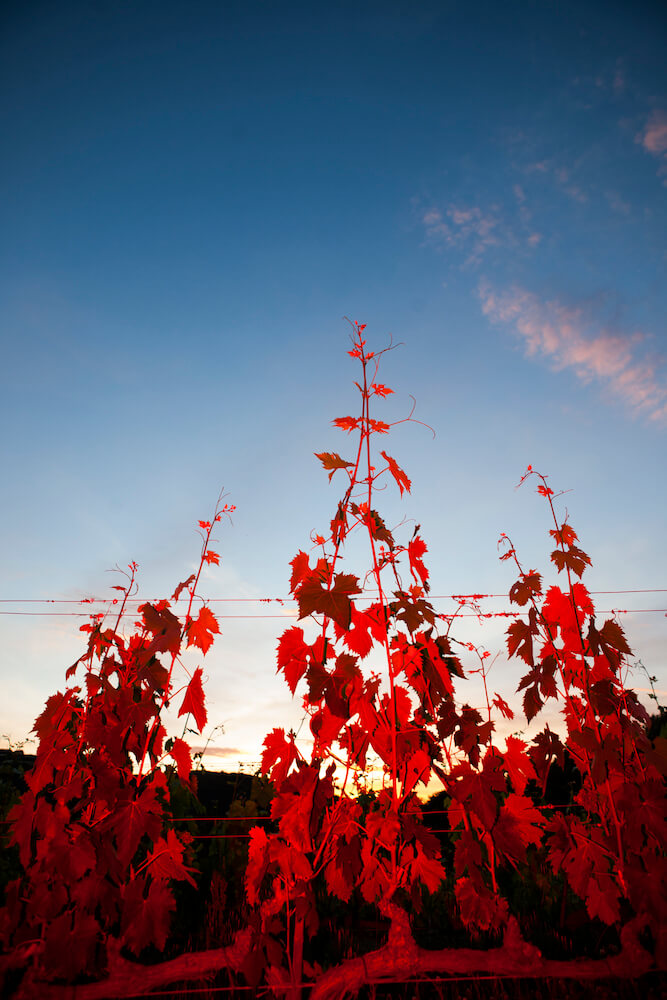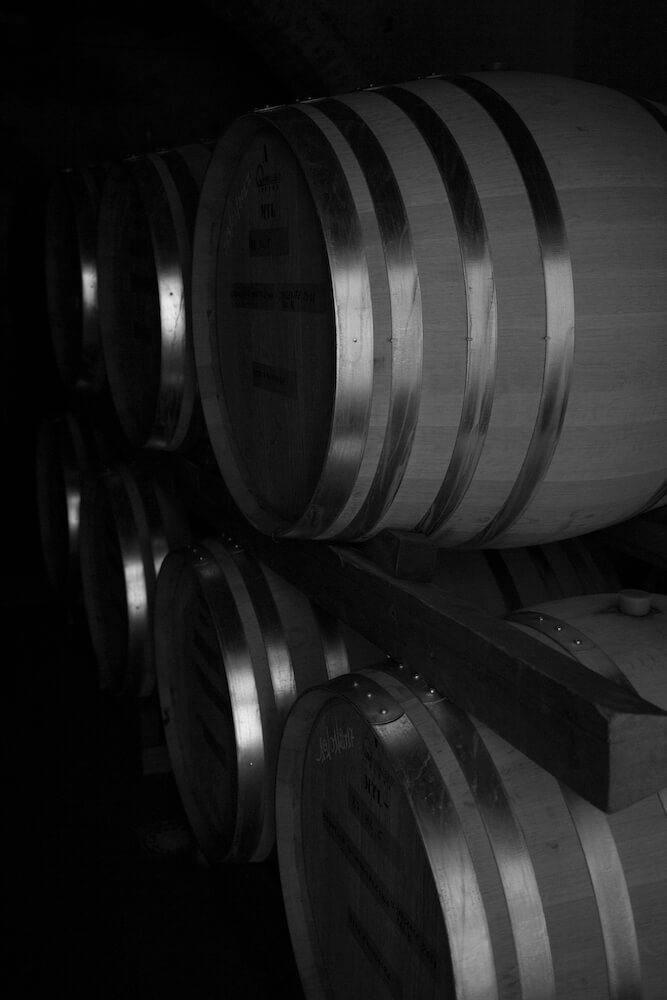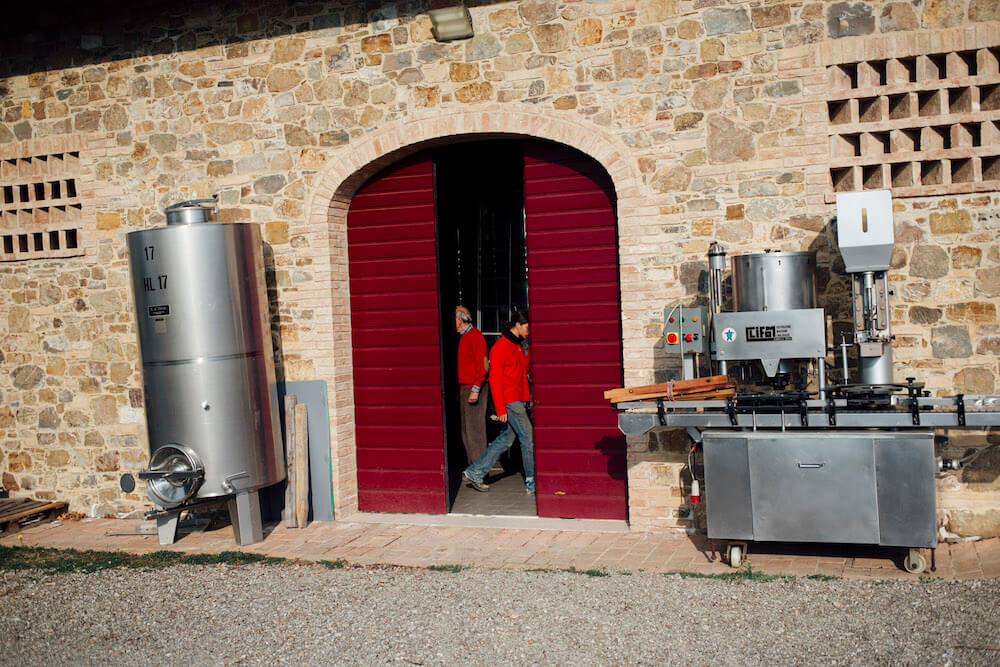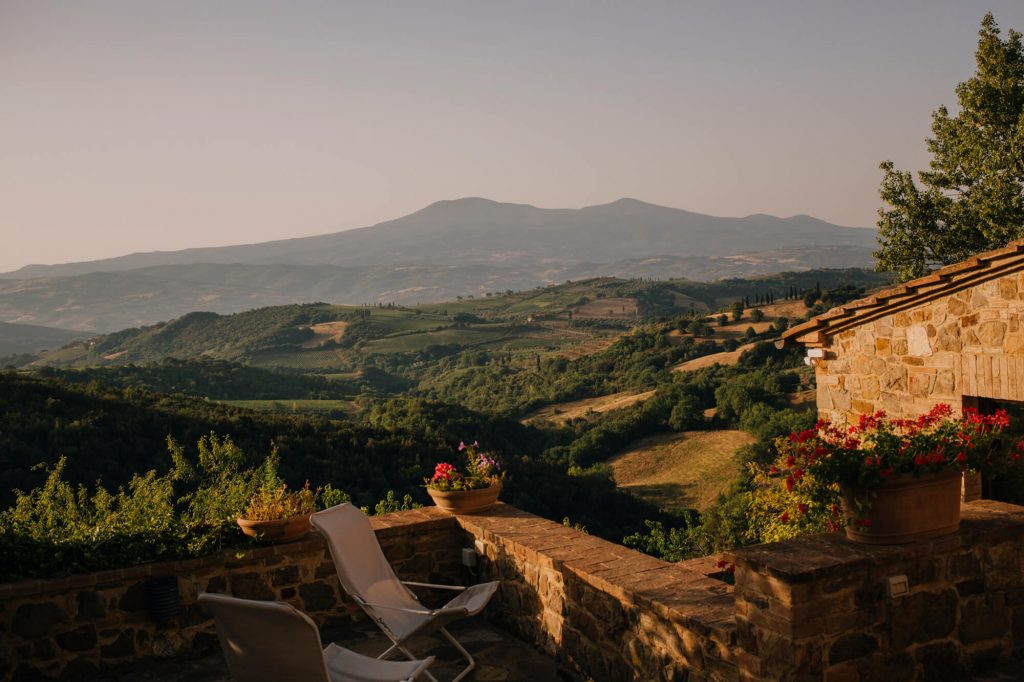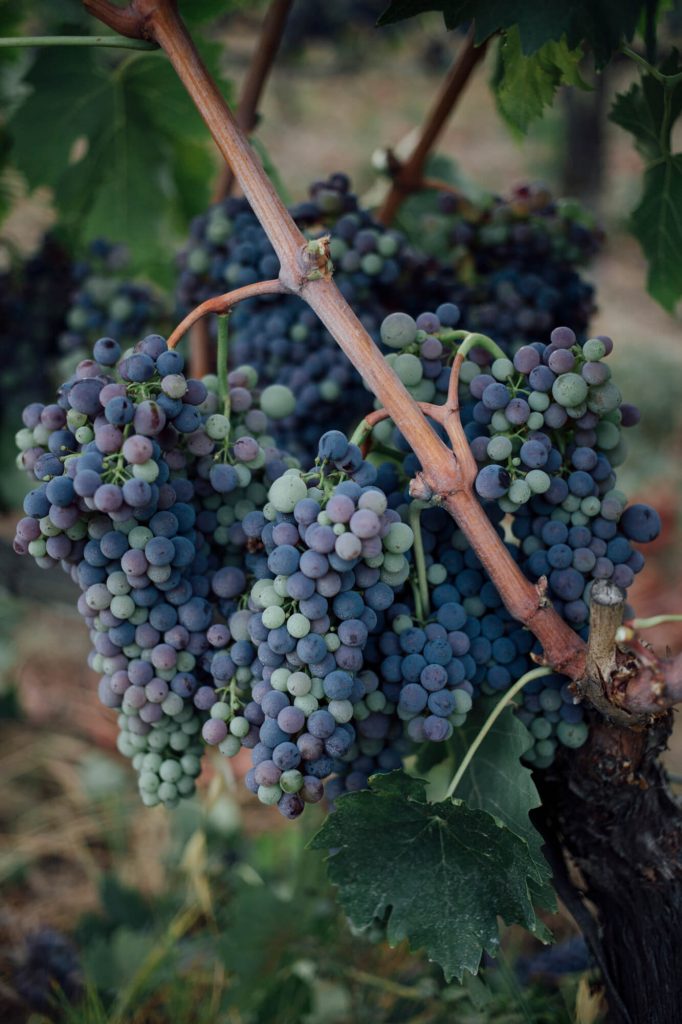Cosmo di Salicutti
The Salicutti winegrowing estate, owned by legendary Munich restaurateurs Felix and Sabine Eichbauer of Tantris fame, is a place of untamed beauty located in the southeastern corner of Montalcino. The precise history of the property, which lies roughly two hours from Florence, have been lost to the mists of time, but at least the origins of its name are clear: it refers to the stream that marks the estate’s southern boundary.
Certainly few would have expected this patch of land to become a cradle for grand terroir when Francesco Leanza first tilled it almost 30 years ago. The estate house and cantina now form the heart of an enclosed 11-hectare cosmos, including 4.5 hectares of vines, an olive plantation and forest. “The land preceded us; it now nourishes our vines, and it will be here when we are gone,” Sabine and Felix Eichbauer affirm — a mantra that encapsulates their abiding respect for nature and its creatures and their growing concern about the impact of humans and the technology of culture.
Salicutti is the first organically certified estate in Montalcino, with vines dating back to 1994 and soils unsullied by conventional pesticides. Wines are cultivated here as they have been since time immemorial: by heeding nature’s voice and following the guidance she provides.
The estate’s simple rustic architecture has been gently remodeled and retrofitted with the forward-looking infrastructure of a modern estate. Sabine Eichbauer has led this effort, drawing on her experiences at the offices of noted Roman architect and designer Massimiliano Fuksas. The result: a refuge from the outside world, a place for independent life and wine production where true pristine beauty is given space to unfold.
The Vineyards
-
Teatro Brunello di Montalcino
At just 0.7 hectares the smallest cru at Salicutti, "Teatro" opens like an antique amphitheater to the south and has been planted since 1994 with Sangiovese grafts on SO4 rootstock. The somewhat cool microclimate of this vineyard, whose vines grow at roughly 500 meters in elevation, lends the wines a notably ethereal, intensive and complex air.
-
Piaggione Brunello di Montalcino
Covering 1.2 hectares, "Piaggione" faces to the east-by-southeast with fossil-rich calcareous soils at 420 to 450 meters of elevation. It is populated with a mixed set of clones from early ripening red grapes. The vineyard is divided by a terrace into two different homogeneous parcels that were planted in 1994 and 2007 respectively. These are wines like sportscars, muscular yet restrained in their red fruit, floral notes and fine tannins.
-
Sorgente Brunello di Montalcino
The 1.5 hectare "Sorgente cru sits at 450 meters in elevation. Its heavy, clayey sand soils are essential for extending the ripening process later into the season. The site is divided into the "old" and "new" vineyards. The Sangiovese planted here is grafted onto 420A and SO4 rootstocks. These are fresh, multi-faceted wines, with red fruits and fine tannin structure reflective of the heavy soils they grow in.
Over the years, "Sorgente" has generally been the source for the Rosso di Montalcino. Because of the stony galestro soil, the grapes ripen here somewhat later than in Piaggione and Teatro, with a slightly lower alcohol content. The delayed ripening is — with a view toward the expected impact of climate change — an absolute plus.

A Rosso
At Salicutti, “Rosso” is a perpetual understatement: its grapes derive exclusively from vineyards classified for the production of Brunello wines. A wine for all those in search of the “Holy Grail of Sangiovese purity” (Monika Larner, Robert Parker’s The Wine Advocate).
The label shows the view over the “Cosmo di Salicutti” as it has existed since 2017 — house, cellar and farm at the heart of a cosmos of gardens, fields, forest and walled vineyards.
The Wine Cellar
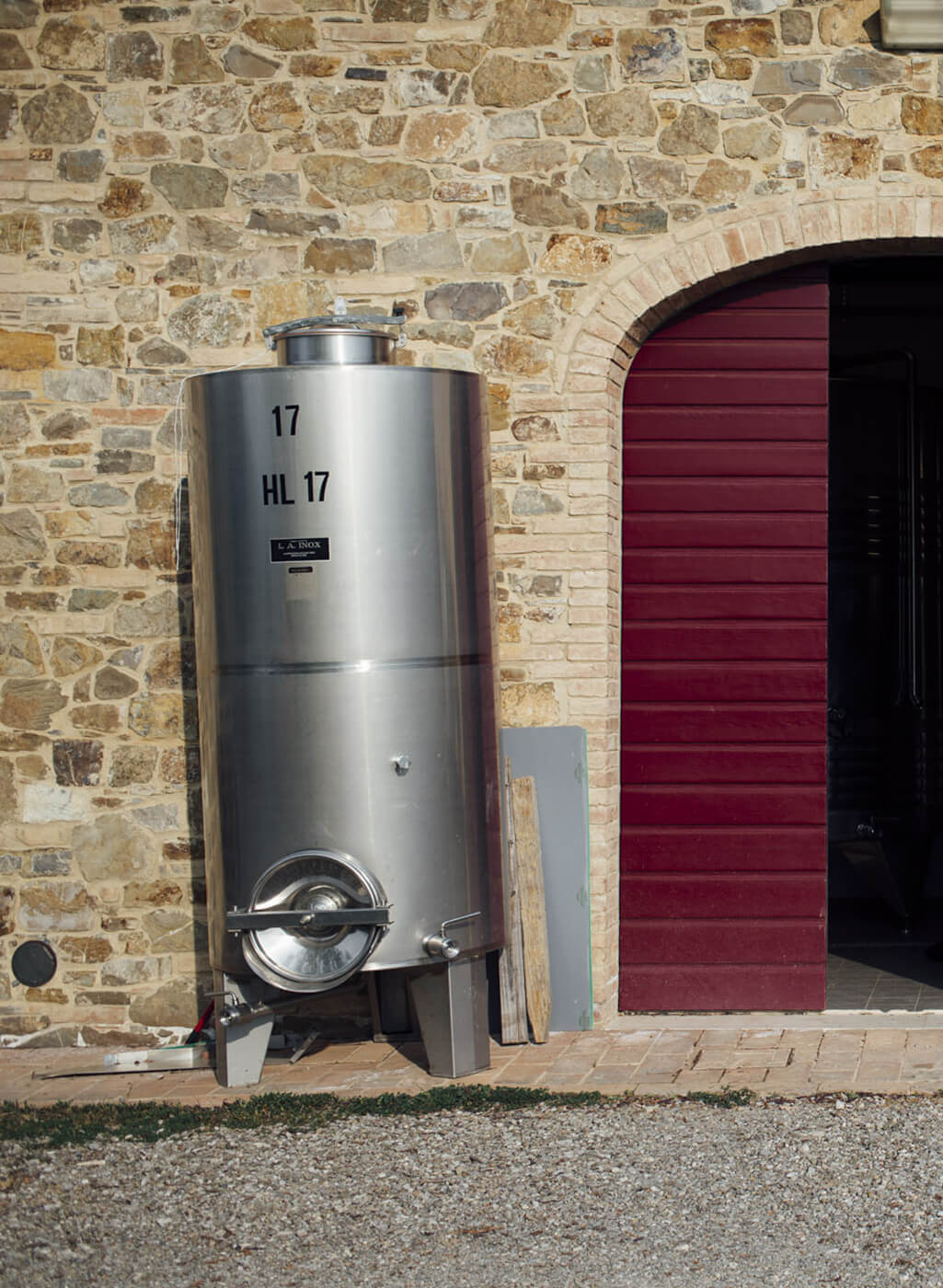
-
Stainless steel vats
The cellar is equipped with stainless steel vats of varying capacities, ranging from 390 to 2,080 gallons, adding up to a total of 8,450 gallons. All vats are automatically temperature-controlled and equipped with autonomous electronic control switches. For the pressing of the marc, a traditional hydraulic press with a wooden cage is used.

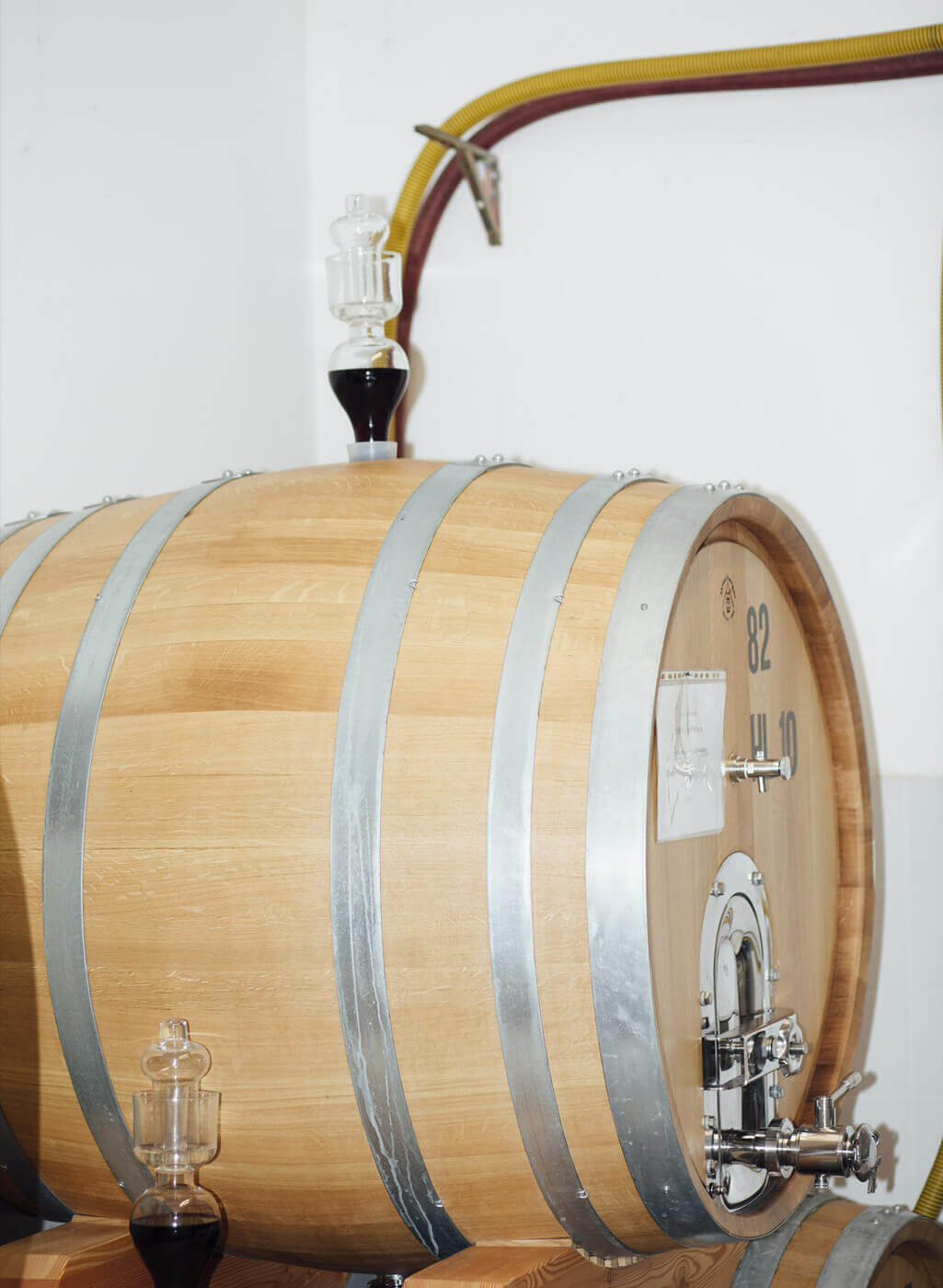
-
Vinification cellar
The air-conditioned, 850 square feet vinification cellar is located in a partly submerged new annex that merges unobtrusively with the old building complex. Its walls and ceilings are insulated and the external walls feature traditional walling material such as local stones and salvaged bricks

The Barrel Aging Cellar
Well protected by the thick, old stone walls, the air-conditioned, 850 square feet barrel aging cellar is located in the former stables of the old farm house whose original architectural features were maintained and enhanced through careful renovation.
Wines are aged in tonneaux barrels of French oak (130 gallons) and a range of wooden barrels of French and Slavonian oak, with the applied capacities increasing slowly over the course of the aging process (from 260 to 520, 780 and finally 1,040 gallons).
